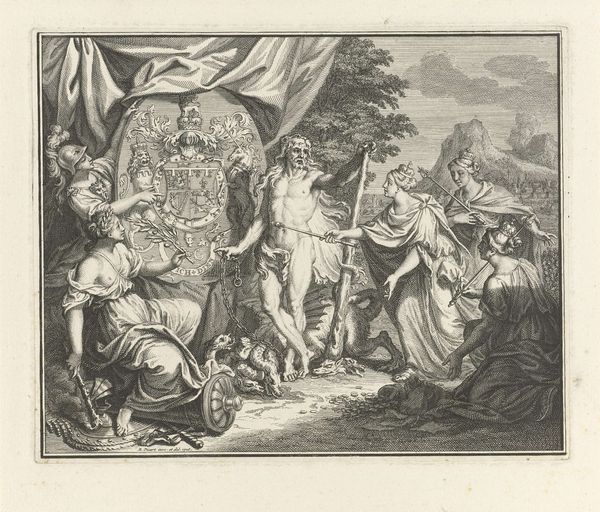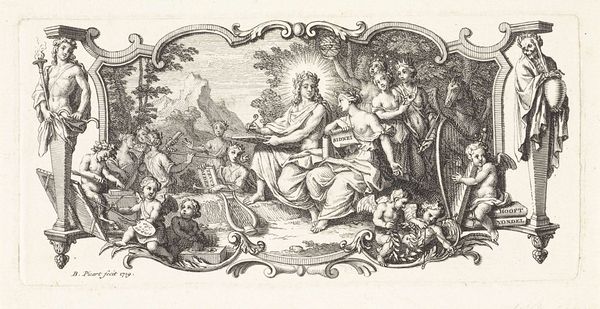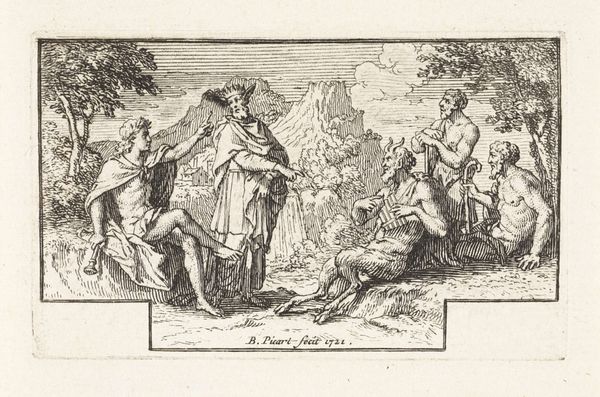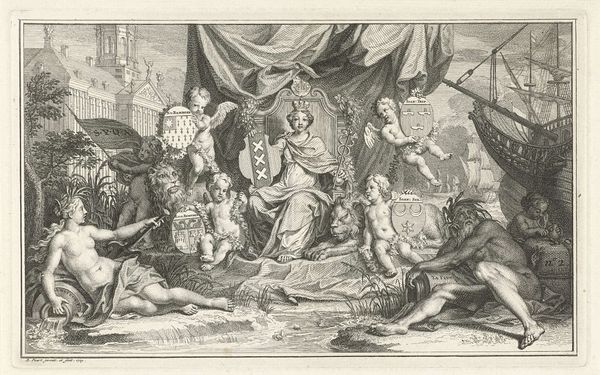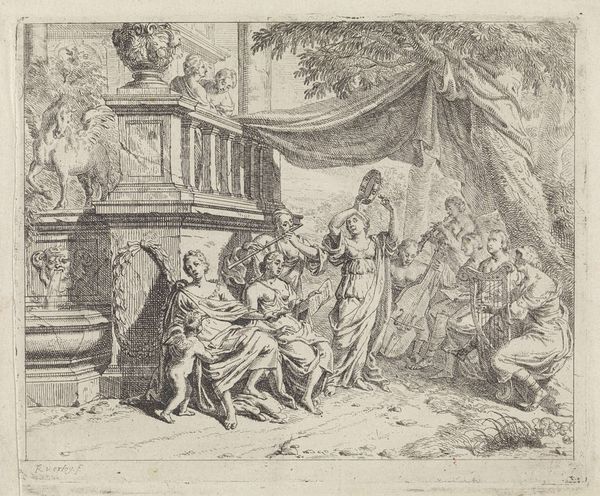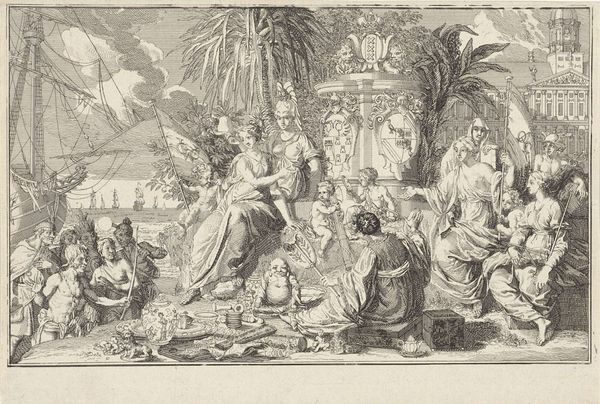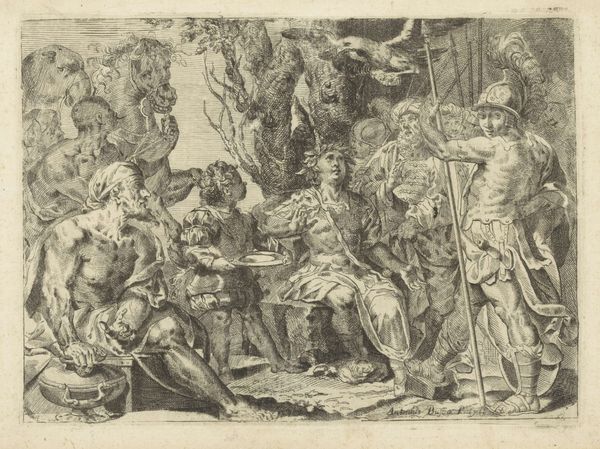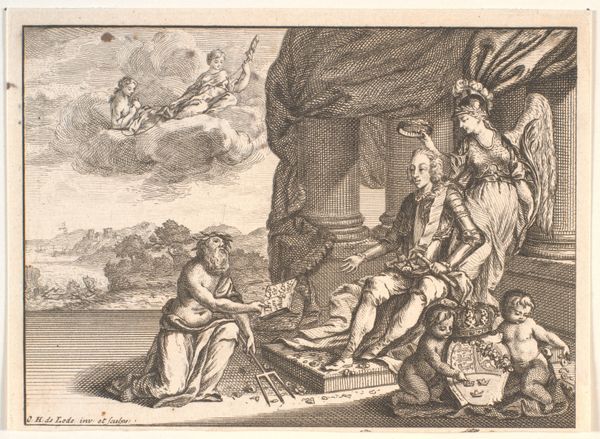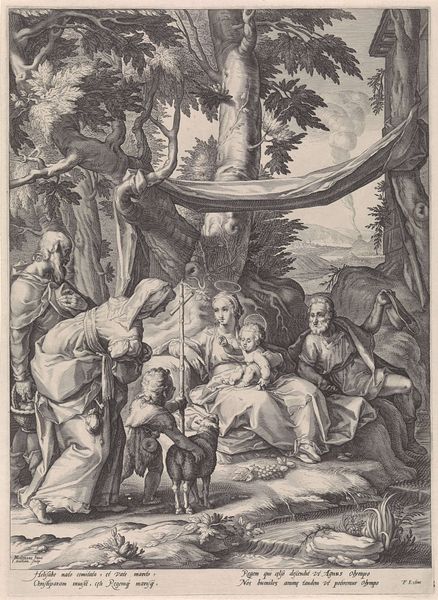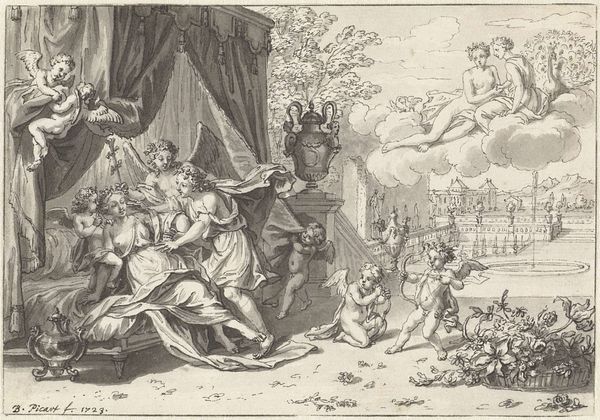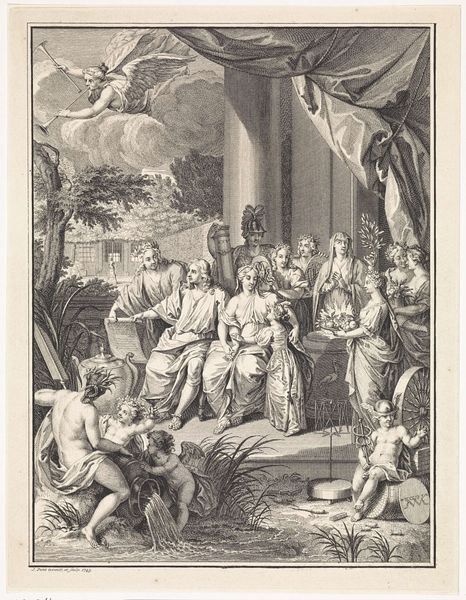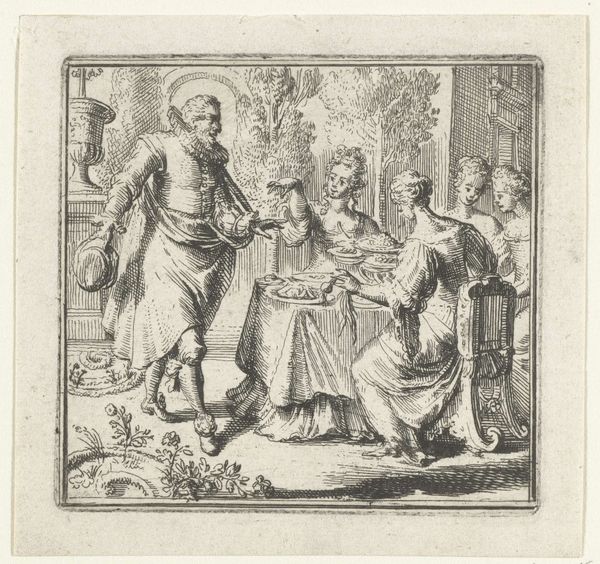
Dimensions: height 101 mm, width 148 mm
Copyright: Rijks Museum: Open Domain
Curator: This delicate print is an allegory on the Dutch East India Company, created by Simon Fokke sometime between 1752 and 1784. Even with the fine lines of the engraving, the grandness of the scene is apparent. Editor: It's like a carefully constructed dream, isn't it? It seems overwhelmingly celebratory and self-assured, but perhaps a bit much. Like an elaborate justification for something morally questionable. Curator: Exactly. Allegorical depictions of the VOC like this were popular, reflecting the company’s immense power and influence. Note the central female figure. She is a personification of the VOC itself, regally enthroned. Editor: And flanked by other figures. I see classical allusions with that Minerva-like figure holding a spear behind her, and then what looks like Mercury down to her right. But my eye keeps drifting towards the lower right. The diverse figures, darker skinned… there's an inherent power dynamic in their placement. Curator: Indeed. That's where things get complicated. They are clearly meant to represent the lands and peoples exploited by the company, bearing tribute. The iconography serves a dual purpose: glorifying Dutch enterprise, yet also hinting at the unequal relationship between colonizer and colonized. It is about commerce but also the human cost of that trade, however veiled. Editor: These visual allegories reinforce narratives, but they can also reveal tensions. Is that intentional or is that something revealed when looking back? It's hard to view an image celebrating an institution built on exploitation without confronting those deep historical wounds. The details are so deliberate; I mean, just look at those children playing with the mirror, mimicking. Curator: Precisely! Even details like that feed into a constructed narrative. That’s what makes works like this so fascinating. What meaning they held then, and how we re-interpret the imagery now, as our historical awareness deepens. I see that these visual tropes, while initially about national pride and dominance, have also become relics of a dark side of our own history. Editor: Yes, images can simultaneously reflect the dominant ideology and unwittingly expose its contradictions. That friction between intent and impact… that is precisely where meaningful discourse happens. Curator: It reminds us that images are never neutral, that art reflects societal values while also inviting questions and potentially challenging our perceptions over time. Editor: Definitely. I leave seeing how it's possible for a celebratory emblem to contain multitudes, serving both as a testament to power and an indictment of its inherent injustices.
Comments
No comments
Be the first to comment and join the conversation on the ultimate creative platform.

